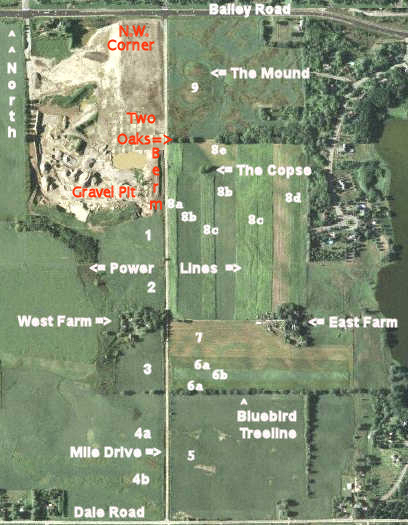
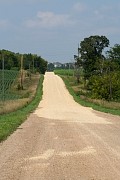 The county road crew has come along and put down new gravel. The new gravel is lighter
in color. It's hot and hazy.
The county road crew has come along and put down new gravel. The new gravel is lighter
in color. It's hot and hazy.
|
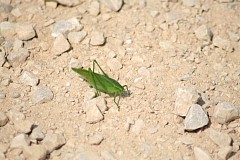 A Bush Katydid (Scudderia septentrionalis).
Katydids, like crickets, make sounds with their wings.
This species is not native to Minnesota.
A Bush Katydid (Scudderia septentrionalis).
Katydids, like crickets, make sounds with their wings.
This species is not native to Minnesota.
|
|
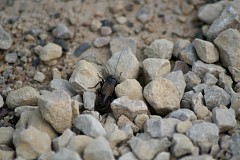
Hiding in the road is a Field Cricket (Gryllus rubens
Crickets have long antennae. They also have wings that they keep folded over the side of their
body. Female crickets have long, spear-shaped ovipositers that they use to lay eggs. I think this
is a female. Crickets are nocturnal, sleeping during the day and looking for food and doing
their cricket stuff at night.
Only male crickets sing, and they sing to attract a female cricket for a mate. They make their chirping song
by either rubbing their wings together, or rubbing a leg against a wing.
|
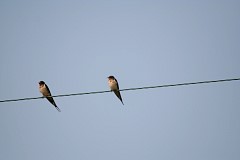
Two barn swallows.
|
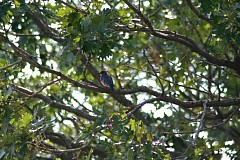
A good picture of an eastern bluebird along Bluebird Treeline.
|
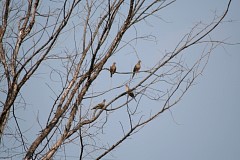
Four Mourning Doves pose on a small dead American elm.
|
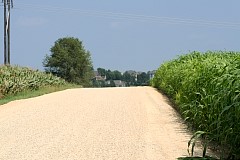
The corn (left) and sedan grass (right) are closing in. When you walk past a growing cornfield this
time of year your breathing is overwhelmed by what seems to be an oppressive, heavy corn vapor.
|
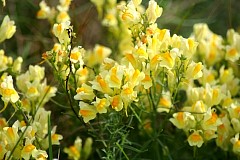
Butter and Eggs continue to bloom.
|
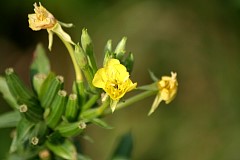
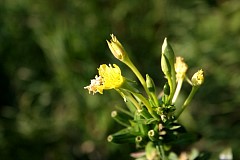
Common Evening-Primrose (Oenothera biennis) is native to Minnesota.
The pale yellow flowers bloom for most of the summer, from June to September.
They open in the evening, hence the name "evening primrose", and are pollinated by
Lepidoptera (Moths and Butterflies) and bees.
The flower has an unusual response to ultraviolet light. A brilliantly colored
center, invisible in visible light, is boldly apparent under ultraviolet.
Return to Flora
|
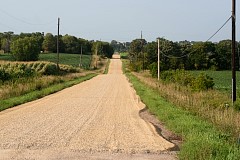
The county has now finished putting down new gravel on the whole road.
|
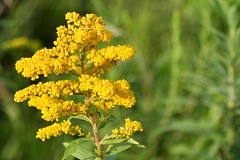
Ants crawl on Showy Goldenrod (Solidago speciosa var. rigidiuscula), which is native.
The species is widespread in the eastern United States, ranging from New Hampshire west
to Minnesota and Nebraska, and south to the Gulf states.
Return to Flora
|
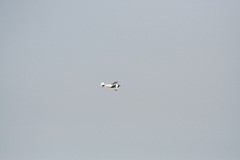
Biplane, fixed landing gear, radial engine, perhaps some kind of stunt plane.
|
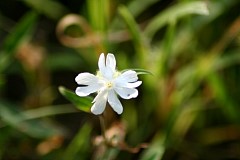
This has been a very tough flower for me to photograph. I should be using white balance
control, but I am home looking at the picture before I realize it's not perfect. This is of
course White Cockle or White Campion.
|
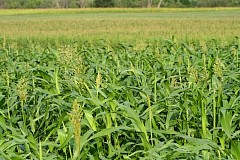
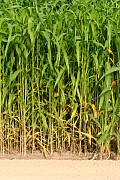
Sedan grass.
|
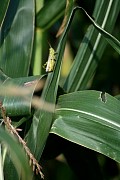
The Differential grasshopper (Melanoplus differentialisis) a common cornfield pest.
The femur of the jumping leg is distinctly marked with black chevrons, which you can
barely make out if you enlarge this picture.
|
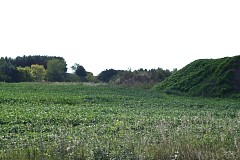
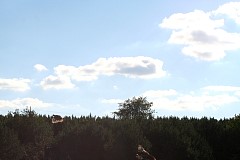
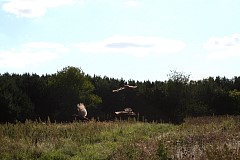 I walked west along the south end of the gravel pit and kicked up
some pheasants. The photography is nothing to brag about, but I include these shots
just for the record. The rightmost picture, above, shows what I believe is the broadside
view of an immature rooster without his brilliant coloring.
I walked west along the south end of the gravel pit and kicked up
some pheasants. The photography is nothing to brag about, but I include these shots
just for the record. The rightmost picture, above, shows what I believe is the broadside
view of an immature rooster without his brilliant coloring.
|
|
Pheasants were imported from China in 1881 and weren't found in Minnesota until 1905.
|
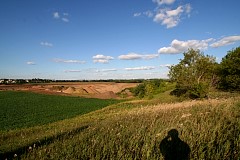
Looking back over the pit the photographer's shadow is in the foreground.
|